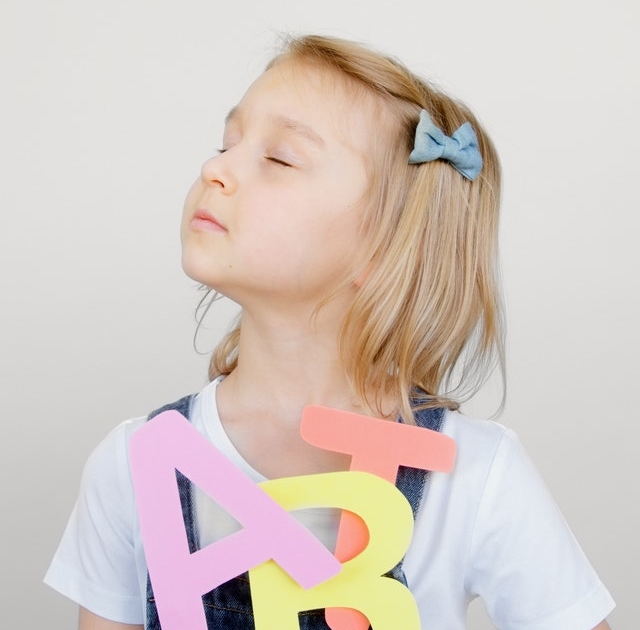

- Call 908 543 4390
- Email
- Dr.Joni Redlich PT,DPT


This author has yet to write their bio.Meanwhile lets just say that we are proud jonikidpt contributed a whooping 139 entries.
Happy Mother’s day to all our moms. Today we celebrate the unmatched and superhuman strength of mothers. Motherhood comes in many forms from biological to adoptive to a grandparent caregiver to legal guardian to working mom to stay at home mom to single mom to military mom and so much more. Every mother is different […]
Savvy parents know that every child has their own sensory preferences and things they avoid. Whether it is picky eating, not liking the seams in socks, or having a hard time sitting still because the child’s body has the wiggles, every child has their own sensory world. Every adult has their sensory preferences too, but […]
When learning about any topic, you can only learn so much from studying the academic literature. For example, if I want to understand Italy I can only learn so much from a textbook. In order to truly better understand Italy, It is vital that I actually go to Italy and experience first hand the climate, […]
What does movement have to do with Autism, you ask? In short, EVERYTHING! Movement is the way we interact with our environment, one of the ways we make sense of all the information around us, and the way we turn our will into action! Even something that seems so based in the brain, like writing […]
As March is also Brain Injury Awareness Month, we will be discussing concussions. Did you know that concussions are actually mild traumatic brain injuries? Let’s unpack what actually happens during a concussion. First of all, a concussion can result from rapid movement such as whiplash, a direct blow to the head/ face/ neck, or indirectly […]
There are so many reasons why the Spider Cage is a powerful therapeutic tool to integrate into your child’s physical therapy program. If you worry about your child not having all possible opportunities to develop new movement skills, you should try out the Spider Cage during a trial session at our office to see firsthand […]

Participation in the arts are a way for someone to express themselves. It creates a window into the soul and an escape all in one. Some turn to painting, drawing, music, drama, or dancing to find their sense of self or to relieve stress after a long day, and this is no different for kids and adults with Cerebral Palsy (CP). Taking part in the arts is a wonderful thing for children with CP to do, no matter their level of disability, and here’s why!
Self Expression Without Limits
The arts allow for a place to explore what you are thinking or feeling. Whether you are verbal or non-verbal, participation in an art form is a way to get your feelings out! Society often tries to put us in boxes that may make us feel limited. But when you are creating art, you get to make the rules. Bend the rules to work for you
Adaptability
With the free form nature of many arts programs there are no rules that have to be adjusted to make it work for your body. If your dancing includes, moving your head side to side to make your wheelchair turn to the right and the left, do it! If you need something to secure a paint brush to one of your hands or to your head to paint your beautiful picture, why not! It’s your masterpiece, so the environment can be set up to make creating your art that much easier.
Community OR Solitary Art
Many arts are performed in a group setting for those who love being social, like Drama. You can find your Drama, Dance, or Visual Arts community if that floats your boat. BUT the cool thing about the arts is many forms don’t have to be done in a group, they can be done alone too if you’d prefer to work that way.
Confidence Booster
For many kids and adults, taking part in the creation of something beautiful, or something they made themselves, is a huge confidence booster. When the right adaptations are in place to support each child or adult, either with motor or intellectual considerations, the child can make something by themselves (or with a little bit of teamwork if needed) and feel proud of themselves for doing so!
Types of Art
Visual Arts
Dance
Drama
Music
But where is there to go in NJ for my child with CP to participate in the arts? Check out these links to find out more!
Dance:
http://kayelynndance.com/chance-to-dance/
http://www.danceinnovations.org/dipf
http://kayelynndance.com/chance-to-dance/
http://www.danceinnovations.org/dipf
Theater:
https://papermill.org/access-for-all
Art:
Music:
https://www.theconnectiononline.org/com
References:
Children with cerebral palsy (CP) undergo intervention throughout their lives. They often receive physical therapy, occupational therapy, and speech therapy for many years in the home, school and clinic settings. Parents are often presented with lots of opinions as to therapy options, medical interventions like botox and baclofen, bracing options, and surgical procedures, such as […]
February is American Heart Month! Along with AHM, it is also Congenital Heart Defect Awareness Week from February 7th to February 14th! Many people don’t know, but children with Congenital Heart Defects (CHDs) often have to have surgery to correct the way their heart is working within their first year of life. Sometimes, depending on […]
What is it? If you are a parent of a special needs child, you have learned to be very patient when it comes to your child’s progress in therapy programs and how to embrace the baby step milestones along the way. In this video, I will share with you how I had to develop patience […]
